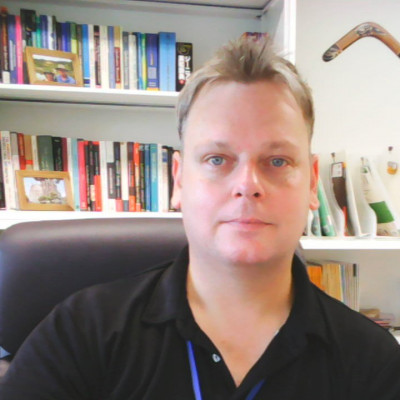Sessions / Bilingualism
CLIL and Translanguaging in EAP classrooms #2836
A class of 3rd year Japanese university EFL students (n=26) were taught a subject called “Science and Society in English” that allowed them to utilize their prior knowledge from their majors in the EFL classroom. A CLIL-based syllabus incorporating translanguaging approaches was created to support students' use of L1 and L2 materials. Themes explored in the class covered the impact of science and technology on society, and its benefits/ hindrances . Following "Bloom's Revised Taxonomy 2001" as a learning progression guide, students were provided with opportunities to read and discuss topics related to their Science and Technology majors in their L1 and L2 to prepare to write a research paper and make a final presentation in English. This presentation will outline how Blooms Revised Taxonomy, CLIL and translanguaging approaches were incorporated in the classroom throughout the 15 week semester. It will outline the observed benefits to students’ comprehension of content and the specific language it requires through bringing their prior knowledge from their majors to the forefront. Findings indicated that allowing learners L1 in the L2 classroom increased students' levels of motivation and willingness to communicate, while developing their academic writing and presentation skills.
Bilingualism SIG Forum #2691
The PanSIG conference has always been a chance for special interest groups to come together to focus more intently on their individual needs and goals. Throughout the past two years, participants at our PanSIG forum have shared their experiences about coping with the pandemic, as well as changes and shifts in their bi/multilingual and bi/multicultural stories. This year, as we are finally back together face-to-face, we’d like to invite as many families and interested people as possible, of all ages and backgrounds, to participate in a casual round-table discussion. We’ll provide a brief explanation of the round-table process, topics cards to prompt discussion, and a “talking stone” to facilitate turn-taking. We look forward to sharing stories about how our language learning journeys have been reimagined, as well as any new directions we have been heading. Please join us!
Transfers of L1 and L2 in bilingual education #2954
It’s often argued that we have the order of language acquisitions in which we acquire questions including embedded questions and negations. However, I completely disagree with this theory and I will defend my stand with valid arguments in this presentation, connected to an analysis of narrative story-telling of writing. In addition, I discuss that L1 speakers have a tendency in talks and interviews, which will have an influence on the way of interactions on a conversation analysis, related to bilingualism. This research, therefore, focuses on two sides of learning and an original identity in language. To begin with, a negative transfer of L1 has been completely shone a glaring light on usages of second language under the onslaught of asking questions and negations in syntax. Moreover, Japanese might not acquire the functions of indefiniteness and definiteness correctly as the same thing as the Russians (Odlin, 1989). Furthermore, a positive transfer of L2 has been highlighted in the instruction to give opinions that learners can understand quite easily, which provides an illuminating discussion of how languages are acquired in the light of that opinion method. Basically, a transfer is psychologically defined as a training habit that a first task affects on a second task (Kimball & Holyosak, 2000; Manaro, 2018). This presentation deals with the insight to rethink the curriculum that follows grammatical structures in the shadow of the drills that would make a habit in brains. In conclusion, research in a second language acquisition still remains in the dark about the extent of which teaching methods absolutely perpetuate convincing language acquisitions.



